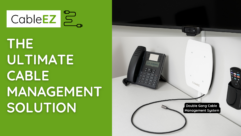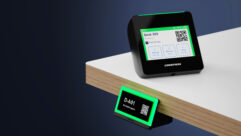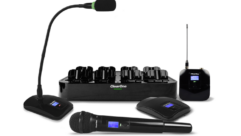Mounting Options for Corporate Boardrooms
Mar 1, 2001 12:00 PM,
Patricia Palmer, Premier Mounts
PLANNING VIDEO EQUIPMENT INSTALLAtion in a boardroom or conferenceroom means considering several factors: room layout, the equipment tobe installed and the integration of the A/V system.
Mounting options vary. You can simply place your projector on theconference table or have it concealed in a cabinet; but to achieveoptimal image convergence, the best method is to have the projectorceiling mounted. One conventional way is to permanently mount theprojector in an inverted or upright position using fixedceiling-mounting brackets. These mounts can be purchased with theprojector or through a mount manufacturer (such as Premier Mounts).Most of them feature built-in yaw, tilt and roll adjustments foroptimal placement of the projector. Some mounts also offer aquick-release feature to easily remove the projector for maintenance.If the ceiling is exceptionally tall and the end-user needs to clean,service or replace a lamp on the projector, one practical alternativeis to attach the projector on a motorized lift.
ADVANTAGES OF LIFTS
From a customer’s point of view, motorization presents manyadvantages. The most important aspect is to maintain the appearance ofa room. With a lift, the projector is concealed in the ceiling when notin use. It can be quietly lowered for viewing at the push of a button.Lift manufacturers also offer a variety of ceiling closures for bothdrop tile and drywall ceilings.
Lift systems are more flexibile, as well. With three positions— storage (equipment hidden in the ceiling), adjustable showposition, and service (lift fully extended) — motorized liftsenable installers to position their projector anywhere below theceiling to align the projector with the screen. The service positionprovides crucial floor-level access, eliminating the need to use aladder or additional technicians to reach the projector.
SELECTING A LIFT
To select the optimal lift system that will accommodate projectrequirements, lift specifications are based on the following criteria:the projector model and dimensions, the lift’s lowering distancesneeded for show and service positions, and the available ceilingclearance of the application.
A rack-and-pinion design may be used, but keep in mind that if theprojector needs to lower 3 to 4 feet from the ceiling, this means thatthe same amount of ceiling space will be needed to conceal theequipment. When the ceiling clearance is restricted, a scissor-stylelift is an ideal solution since it only occupies a fraction of itsextended length by collapsing into a smaller amount of space.
Before mounting a lift to the ceiling, installers are stronglyadvised to make sure that there is enough ceiling space to conceal theA/V equipment. A visual on-site check is recommended for any possibleobstructions (water pipes, existing beams, etc.). Contact the liftmanufacturer for technical specifications on the lift or to get answersto any questions you may have. Finding out that the lift will notaccommodate the application when the installation has already startedwill considerably delay the installation, increase its cost andcertainly inconvenience everyone involved.
INSTALLATION & INTEGRATION
When installing a lift, the main criteria should be safety. A goodrule of thumb is that the supporting structure should be capable ofsupporting a minimum of three or four times the weight of the A/Vequipment, or follow the local building codes, whichever isgreater.
The use of plenum shrouds is another essential issue to consider(depending on air plenum areas and fire safety codes). Using a plenumshroud will also provide a dust-free environment and a clean appearancewhen looking up at the ceiling hole.
For lift placement in the room, the distance from projector toscreen is critical. Once this distance is established, the attachingpoints of the projector (also called center of gravity orlens-face-to-base-box center) and the lift itself will determine theexact location of the lift. If the projector’s lens is off-center, thelift should also be off-center so that the equipment remains alignedwith the center of the screen.
A basic approach when integrating a video system is to use thelow-voltage controller most lift manufacturers offer. For a moreelaborate system, the lifts can also include accessories ranging from apower sensor with screen control to a 12-volt trigger option. Alwayslook at the entire system as a whole and avoid duplication between thedifferent functions of the control system.










